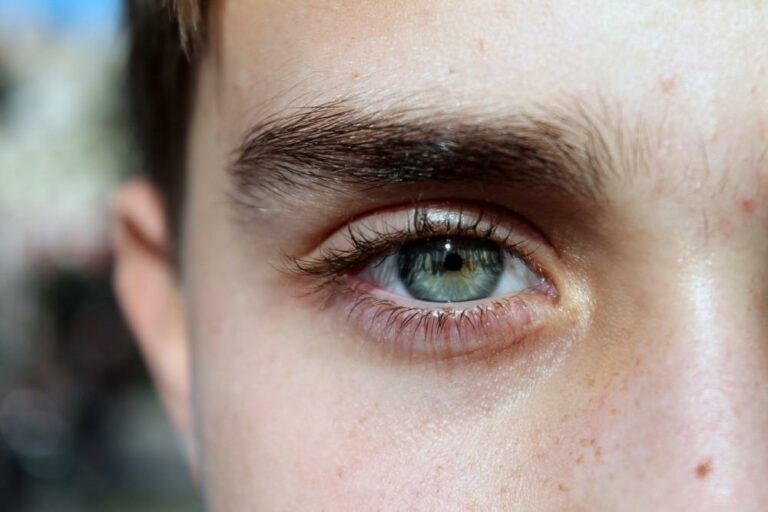Blindness: What You Need to Know
Author: Giselle Robel
Giselle Robel
Category: Health
 Showing that Eye is important for everyone
Showing that Eye is important for everyone
Blindness is the inability to see anything, including light.
Blindness is strictly defined as the state of being sightless in both eyes. A completely blind individual is unable to see at all. Moreover, a blind individual is unable to see. In a strict sense, the word “blindness” denotes the inability of a person to distinguish darkness from bright light in either eye. And also, the terms blind and blindness have been modified in our society to include a wide range of visual impairments. Blindness is frequently used today to describe a severe visual decline in one or both eyes with the maintenance of some residual vision. The word blindness , however, is commonly used as a relative term to signify visual impairment, or low vision, meaning that even with the aid of eyeglasses, contact lenses, medicine, or surgery, a person can not see well. Vision impairment can range from mild to severe.
Worldwide, between 300 million and 400 million people are visually impaired due to various causes. Of this group, approximately 50 million people are blind, unable to see light in either eye. Eighty percent of blindness occurs in people over 50 years old.
Symptoms of blindness
 Eye visual for Normal and Clouded lenses
Eye visual for Normal and Clouded lenses
You see nothing if you are completely blind. However, if you're partially blind, you might experience the following symptoms:
- cloudy vision
- unable to see shapes clearly
- seeing only shadows
- poor night vision
- tunnel vision
Symptoms of blindness in infants
Your child's visual system is beginning to develop in the womb. Although, it doesn't fully form until about 2 years of age.
By 6 to 8 weeks of age, your baby should be able to fix their gaze on an object and follow its movement. By 4 months of age, their eyes should be properly aligned and not turned inward or outward.
The symptoms of visual impairment in young children can include:
- constant eye rubbing
- an extreme sensitivity to light
- poor focusing
- chronic eye redness
- chronic tearing from their eyes
- a white instead of black pupil
- poor visual tracking, or trouble following an object with their eyes
- abnormal eye alignment or movement after 6 months of age
Causes
The following eye diseases and conditions can cause blindness:
- Glaucoma refers to different eye conditions that can damage your optic nerve, which carries visual information from your eyes to your brain.
- Macular degeneration destroys the part of your eye that enables you to see details. It usually affects older adults.
- Cataracts cause cloudy vision. They're more common in older people.
- A lazy eye can make it difficult to see details. It may lead to vision loss.
- Optic neuritis is inflammation that can cause temporary or permanent vision loss.
- Retinitis pigmentosa refers to damage of the retina. It leads to blindness only in rare cases.
- Tumors that affect the retina or optic nerve can also cause blindness.
Blindness is a potential complication if you have diabetes or have a stroke. Other common causes of blindness include:
- birth defects
- eye injuries
- complications from eye surgery
Causes of blindness in infants
The following conditions can impair vision or cause blindness in infants:
- infections, such as pink eye
- blocked tear ducts
- cataracts
- strabismus (crossed eyes)
- amblyopia (lazy eye)
- ptosis (droopy eyelid)
- congenital glaucoma
- retinopathy of prematurity (ROP), which occurs in premature babies when the blood vessels that supply their retina aren't fully developed
- visual inattention, or delayed development of your child's visual system
Who's at risk?
The following categories of people are at risk for blindness:
- people with eye diseases, such as macular degeneration and glaucoma
- those with diabetes
- those that have suffered stroke
- people undergoing eye surgery
- people who work with or near sharp objects or toxic chemicals
- premature babies
How is it diagnosed?
A thorough eye exam by an optometrist will help determine the cause of your blindness or partial loss of vision.
Your eye doctor will administer a series of tests that measure:
- the clarity of your vision
- the function of your eye muscles
- how your pupils react to light
They'll examine the general health of your eyes using a slit lamp. It's a low-power microscope paired with a high-intensity light.
Diagnosing blindness in infants
A pediatrician will screen your baby for eye problems shortly after birth. At 6 months of age, have an eye doctor or pediatrician check your child again for visual acuity, focus, and eye alignment.
The doctor will look at your baby's eye structures and see whether they can follow a light or colorful object with their eyes.
Your child should be able to pay attention to visual stimuli by 6 to 8 weeks of age. If your child doesn't react to light shining in their eyes or focus on colorful objects by 2 to 3 months of age, have their eyes examined right away.
Have your child's eyes examined if you notice crossed eyes or any other symptoms of impaired vision.
How is blindness treated?
The treatment of blindness depends on the cause of blindness.
In some cases of vision impairment, one or more of the following may help restore vision:
- eyeglasses
- contact lenses
- surgery
- medication
If you experience partial blindness that can't be corrected, your doctor will give guidance on how you can function with limited vision. For example, you can use a magnifying glass to read, increase the text size on your computer, and use audio clocks and audiobooks.
However, complete blindness requires approaching life in a new way and learning new skills. Such as, you may need to learn how to:
 Braille Illustration
Braille Illustration
- read Braille
- use a guide dog
- organize your home so you can easily find things and stay safe
- fold money in distinct ways to distinguish bill amounts
You can also consider getting some adaptive products, like a specialized smartphone, color identifier, and accessible cookware. There's even adaptive sporting equipment, like sensory soccer balls.
Prevention
To detect eye diseases and help prevent vision loss, get regular eye examinations. If you receive a diagnosis of certain eye conditions, such as glaucoma, treatment with medication can help prevent blindness.
To help prevent vision loss, the American Optometric Association recommends you have your child's eyes examined:
- at 6 months of age
- at 3 years of age
- every year between 6 and 17 years old
If you notice symptoms of vision loss between routine visits, make an appointment with their eye doctor immediately.













